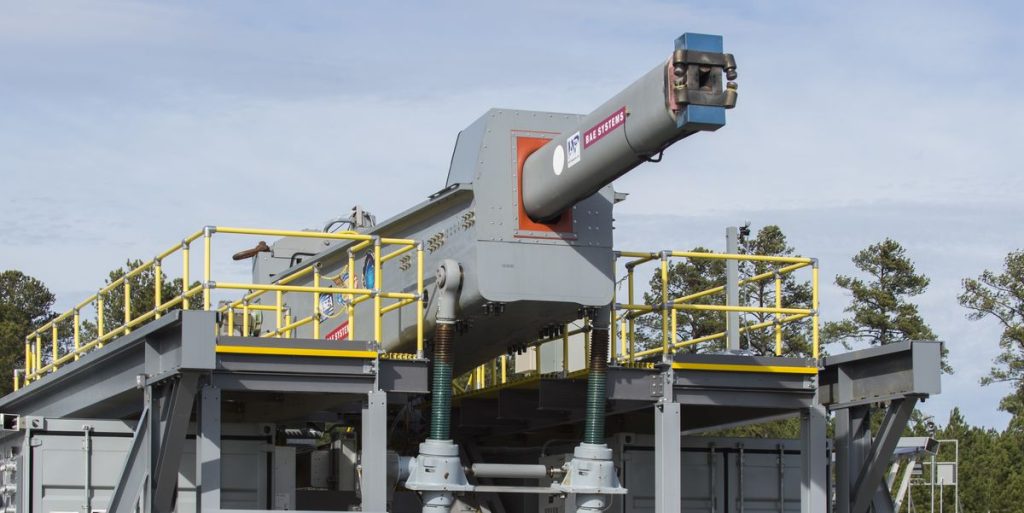The US Naval Surface Warfare Center Dahlgren Division (NSWCDD) has announced that it will be doubling down on the development of hypersonic missile technology, and it’s using advanced manufacturing processes such as 3D printing to do so.
The division recently unveiled its strategic plan for 2021 – 2025, which prioritizes hypersonic weapons advancement in a bid to establish Dahlgren as the Surface Navy Lead in integrating hypersonic weapon systems. This ‘hypersonic technology thrust’ ultimately aims to develop a sustained defense workforce dedicated to hypersonic technologies.
As part of the initiative, Dahlgren has already set up several collaborations with other Department of Defense (DoD) agencies, industry partners, and academic experts through the Naval Surface Technology and Innovation Consortium and the Navy Engineering Education Consortium. This includes the Johns Hopkins University Extreme Materials Institute and the University of Miami’s 3D Printing Center.
“We come to work each day seeking ways to put new capabilities into the hands of our warfighters,” said Adam Jones, head of the NSWCDD advanced hypersonics and guided munitions division. “Offensive and defensive hypersonic weapons will give our Navy the edge it needs to maintain naval superiority against our adversaries.”

Hypersonics: blink and you might miss it
Hypersonic flight is defined as a speed of at least Mach 5, which is five times the speed of sound or about 6,800 miles per hour. With today’s aviation technology, a flight from LA to New York takes around five hours but at Mach 5, it would only take 40 minutes. When applied to the world of defense, the technology has its uses in hypersonic missiles – high-velocity warhead carriers that are much harder for aerial defense systems to intercept.
Impressed? So is the DoD. In 2020, the US ranked hypersonic weapons and counter-hypersonic systems high on its list of top technology modernization priorities, meaning they’re expected to be an extremely useful tool once field-ready.
Dahlgren at the forefront
The NSWCDD is well-suited to leading the US’ hypersonic technology advancement efforts as it already has an extensive history of supporting similar projects. After WWII, Dahlgren oversaw a feasibility study concerning hypervelocity guns to defend against supersonic aircraft and missiles, which were futuristic at the time. Over the decades since then, the NSWCDD has also developed software to launch the Navy’s submarine-based high-speed ballistic missiles, as well as engineered a ramjet capable of flying at Mach 4.
“NSWCDD has over six decades of expertise in developing, testing, and evaluating advanced materials for systems that operate in extreme thermal and ablative environments, as is the case with hypersonic and reentry vehicles—it is in our DNA,” added Dr. Pearl Rayms-Keller, chief scientist of the NSWCDD strategic and computing systems department.
Recently, the division received over $4M in internal investments to fund 22 Naval Innovative Science Engineering (NISE) hypersonic projects, which include the development of new hypersonic materials and advanced hypersonics simulations. Partnering with the University of Miami’s 3D Printing Center, the division’s research teams will now have additive manufacturing systems at their disposal, meaning they’ll be able to leverage improved cycle times, design flexibility, and tool-free production to expedite their hypersonic development efforts.

This certainly isn’t the first time the DoD has applied additive manufacturing to hypersonics research either, as the Pentagon recently awarded 18 university-led hypersonic projects a total of $25.5 million. One of the projects, led by the University of Virginia, seeks to 3D print high-temperature parts made of previously unused niobium alloys. The hopes are that these proposed 3D printing capabilities will eventually be applied to hypersonic scramjets.
ASTRO America, the Applied Science & Technology Research Organization, has also previously completed a U.S. DARPA-commissioned study to accelerate the production of hypersonic missiles using 3D printing. The research details design plans for a Hypersonic Production Accelerator Facility (HPAF), one that consolidates a government customer and leading manufacturers at every tier under one roof.
Subscribe to the 3D Printing Industry newsletter for the latest news in additive manufacturing. You can also stay connected by following us on Twitter, liking us on Facebook, and tuning into the 3D Printing Industry YouTube Channel.
Looking for a career in additive manufacturing? Visit 3D Printing Jobs for a selection of roles in the industry.
Featured image shows the U.S. testing a hypersonic glide body from the Pacific Missile Range Facility in Kauai, Hawaii. Photo via US Navy.


